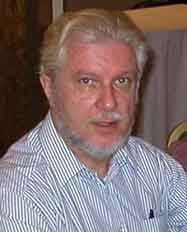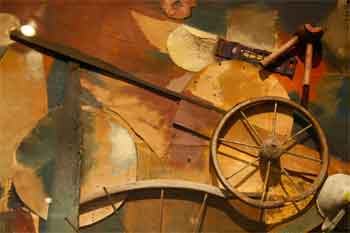The psychology in Alfred Hitchcock

by Francesco Carelli
Professor Family Medicine, Milan, Rome
Palazzo del Governatore, in Parma hostes the exibition “ Alfred Hitchcock in Universal Pictures’ movies “ In a career spanning six decades, Hitchcock made 53 films, the best of which are at once suspenseful, exciting, disturbing. The so-called ‘master of suspense’ pioneered many of the techniques of the thriller genre, and remains highly influential to this day. He was one of the first directors to portray psychological processes in film narrative. However, his films were initially more popular with audiences than with critics, and it was not until the latter part of his career, largely due to directors of the French New Wave, such as François Truffaut, that his genius was recognized.
Hitchcock once remarked that “television has done much for psychiatry by spreading information about it, as well as contributing to the need for it.” During much of Hitchcock’s career, Freud’s ideas were dominant, and although Hitchcock was skeptical of psychoanalysis ( as he was of other explanations for human behaviour), Freudian concepts and motifs recur in many of his films.
Repression is one of the Freudian concepts which recurs in Hitchcock’s films. According to Freud, “the essence of repression lies simply in the turning something away, and keeping it at a distance, from the conscious”. Freud believed that traumatic memories, usually of childhood events, are repressed by the conscious mind; this is a defense mechanism which keeps the ego free of conflict and tension. These memories remain hidden in the subconscious, and manifest themselves in the neuroses and psychoses of the individual, when something induces the momentary retrieval of a repressed memory, triggering a neurotic or psychotic episode. One aim of Freudian psychoanalysis is the retrieval of these repressed memories from the subconscious, in the hope that confronting them will cure the patient’s neuroses.
Psychoanalysis began featuring in film plots in the early 1940s. Hitchcock’s Spellbound (1945) was one of the first Hollywood films to sell psychoanalysis to an American audience, and was the first in which a psychiatrist instead of a private detective solved the mystery.
The opening title of Spellbound states: Our story deals with psychoanalysis, the method by which modern science treats the emotional problems of the sane. The analyst seeks only to induce the patient to talk about his hidden problems, to open the locked doors of his mind. Once the complexes that have been disturbing the patient are uncovered and interpreted, the illness and confusion disappear…and the evils of unreason are driven from the human soul.
Hitchcock described Spellbound as “just another manhunt story wrapped up in pseudo-psychoanalysis.” The main characters, played by Gregory Peck and Ingrid Bergman, are both psychiatrists. Gregory Peck’s character takes over as the head of a psychiatric institution and, upon his arrival, he and the institution’s only female psychiatrist, Constance Peterson (Ingrid Bergman) are immediately attracted to each other. The two fall in love, but it soon becomes apparent that Peck’s character has some psychological problems. He has anxiety attacks whenever he sees a fork being rubbed against a table cloth, or a pattern of parallel lines. This makes Peterson professionally and personally more interested in him. Peterson starts to unravel his mysterious past, but Ballantine ( Peck ) is arrested, charged with the murder of Dr. Edwards, and imprisoned. However, Peterson eventually solves the mystery, and Ballantine is vindicated. It emerges that Ballantine’s fear of parallel lines has its roots in an incident that occurred during his childhood, in which his brother was killed. Ballantine has always held himself responsible for his brother’s death, and his guilt is transferred to the demise of Dr. Edwards – Ballantine convinces himself that he is the murderer.
The Dalí dream sequence in Spellbound
Spellbound also contains a dream sequence by the surrealist artist Salvador Dalí, which is full of striking imagery and symbolism, such as eyes and mutilation, which Freud considered to be important in his interpretation of dreams. The Oedipus complex is another theme that runs throughout the film; Bergman’s character represents a mother figure, with whom Ballantine falls in love.
Vertigo (1958), a masterful study of fantasy and anxiety, is another of Hitchcock’s films which draws heavily on Freudian concepts. It is considered to be one of the director’s finest films, and was nominated for, but did not win, the Best Art Direction and Best Sound Academy Awards. Vertigo has perhaps been analyzed more than any other film. The plot revolves around the efforts of James Stewart’s character, Scottie, who is a private detective, to follow a friend’s mentally ill wife (played by Kim Novak), in order to try and determine the reason for her strange behaviour. Scotty soon establishes that all is not what it appears to be, but, by that time, he has fallen in love with Novak’s character. In the opening scene, the protagonist watches a colleague fall to his death during a rooftop chase. Stewart’s character is racked with guilt, as his colleague was rescuing him when he fell from the roof. This guilt, and the acrophobia (fear of heights) produced as a result of the rooftop incident, are the root of the character’s psychological problems.
The intricate plot of Vertigo is ludicrous, but, again, is filled with Freudian themes and symbols. Scottie’s fear of heights is one theme which is alluded to repeatedly throughout the film. Hitchcock employed the dolly zoom technique, in which the cameraman zooms in while moving away from the actor, or zooms out while moving in, to achieve a disorienting ‘falling’ effect. Freud placed great importance on dreams involving falling; the repeated use of the theme has been interpreted by some to be a manifestation of Hitchcock’s obsession with death.
Another example of Hitchcock’s use of the notion of repressed memories is the film Marnie (1964), starring Tippi Hedren as the psychologically dysfunctional title character. Marnie is a kleptomaniac who loathes men and has a great need to be loved by her mother. She moves from one city to the next, embezzling her employees. Her scams are eventually discovered by Mark Rutland ( played by Sean Connery ), who, by that time, has become obsessed with her. Rutland blackmails her into marrying him, and tries to get to the root of her psychological problems. Soon after they are married, Rutland discovers that Marnie is frigid; she also has an immense fear of the colour red and of thunderstorms. During the course of the film, we learn of the causes of Marnie’s neuroses. It transpires that Marnie’s mother, Bernice, was a prostitute, and that her irrational fears can be traced to an incident that occurred when she was six years old. During a storm, the young Marnie is frightened, and one of her mother’s clients, played by Bruce Dern, tries to calm her down. Thinking that he is molesting her daughter, Bernice attacks the client. Marnie, seeing her mother struggling with the man, picks up a fireplace poker, and strikes him over the head, killing him. The pool of blood produced as a result, and the association of that event with the thunderstorm, are the causes of Marnie’s neuroses. “There is no terror in the bang, only in the anticipation of it.”
From this quote alone, it is clear that Hitchcock had a profound understanding of the human psyche. He knew that the imagination was far more powerful than any image he could render on the screen, and this knowledge was key to his remarkable ability to manipulate his audience. Graphic violence was rarely featured in Hitchcock’s films; the audience instead used their imagination to ‘fill the gaps’.
Take, for example, the shower scene in Psycho (1960), which remains the most famous murder scene in cinema history. The scene, which lasts 45 seconds, involved 78 camera set ups and took one week to film. Not once do we see the knife penetrate the flesh of Janet Leigh’s character, yet the scene is one of the most shocking ever filmed. The piercing violin of Bernard Herrmann’s score is one of the things that makes this scene so effective.
“Always make the audience suffer as much as possible,” Hitchcock once said. An interviewer once remarked that Hitchcock never watched his films with the audience, and asked whether he missed hearing them scream, to which he replied, “No. I can hear them when I’m making the picture.”
Yet Hitchcock’s own psychology remains a mystery. Famously, he had ambivalent views towards women, and his relationships with his cast, particularly the leading ladies, were rocky. Generally, mothers are powerful characters in Hitchcock’s films. “A boy’s best friend is his mother,” Norman Bates tells Marion Crane in Psycho. Freud would have concluded that Hitchcock’s attitude towards women, and his obsession with strong mother figures, is probably due to Hitchcock’s experiences of his own mother, who sometimes made the young Hitchcock stand at the foot of her bed for several hours as a punishment (this is alluded to in a scene in Psycho).
Hitchcock once said that “the way to get rid of my fears is to make films about them”; his films can, therefore, be regarded as projections, conscious or otherwise, of his own neuroses onto the silver screen. Some critics have suggested that Hitchcock had a severely pathological psychology. He has been criticized for the ‘caricatures’ of psychoanalysis presented in his films. But Hitchcock’s portrayals of psychoanalysis should be regarded as a criticism, rather than an endorsement, of the technique. Even though Freud’s thinking was highly influential at the time, Hitchcock was skeptical of it, as he was of other explanations for human behaviour. In this respect, Hitchcock was ahead of his time, as Freud was highly influential in psychiatry at the time. Nevertheless, Freudian concepts were employed almost routinely by Hitchcock in his films, which still retain their impact, despite the displacement of Freud’s theories by biological explanations of mind and behaviour




